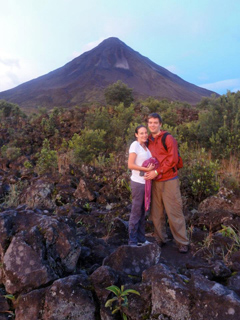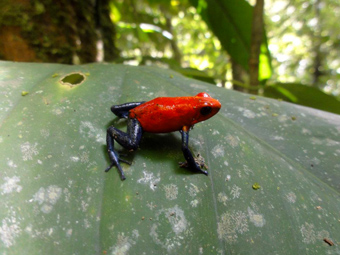
Just when you thought you had run out of ideas about what to make for dinner, when you thought you had tried every chicken dish on the planet and you could not possibly face another stir fry, along comes not one, but two, kosher cooking magazines.
Is it a dream? Could this be real? Imagine not having to substitute ingredients in an effort to try to make a Martha Stewart recipe pareve, or taking out the treif and hoping that a dish comes out at least similar to what the magazine pictures show. Well, kosher eaters, it is true. There are two high quality kosher magazines available to us.
I know a lot of people use websites to find recipes. And I know that the old problem of dragging your computer over to your stove top in an effort to make your dish picture perfect is no longer a problem with iPads and other gadgets. But, with a magazine at your fingertips, the whole thing, pictures and all, can go with you everywhere.
I am sure you are thinking that pictures of gray gedempte meat and brown cholent are not appealing and who would want that anyway? Well, as a food writer for both magazines, I can assure you that these are both high quality publications. Think GOURMET or BON APPETIT goes kosher. The articles are modern, the pictures are gorgeous and the recipes are luscious (of course!), and these magazines are written just for us. Why, even the advertisements are kosher, it is awesome!
Here is the scary part for me. I am worried that people will tire of the magazines, or worse yet, not even bother to subscribe and then we will lose both of them. I wrote about this phenomenon when Whole Foods began carrying the Kosher Valley poultry products. I was practically jubilant when I saw a huge amount of fresh refrigerator space (a precious thing in a grocery store) in many local Whole Foods stores devoted to kosher chickens and turkeys. I was concerned then as well though that there would not be enough customers for the products and that the stores would devote less space or simply stop carrying the high quality poultry products. I was right. The kosher poultry section at Whole Foods is scanty at best with sporadic merchandise that is sometimes frozen, by the store in an effort not to have the products spoil.
Well, this is different and I am hoping that everyone even remotely interested in kosher food will check out these magazines.
You can subscribe online at: JOY OF KOSHER and BITAYAVON
And while you are waiting for the mailman to bring your magazines, you can enjoy these recipes.
Caramelized Vegetable Tagine
This satisfying and riotously colored dish will please all of your sukkot and Shabbat guests. I like to hollow out a pumpkin and roast it for 15 minutes, so that it is not raw, and then present the finished tagine in the beautiful, toasty-orange gourd for a big WOW presentation. I serve the tagine with my Pomegranate Glazed Chicken or braised pot roast.
Serves 10
Extra virgin Olive oil
1 large red onion, diced
6 garlic gloves, minced
1 cup diced fennel
2 cups diced butternut squash, cut into 1-inch dice
1 cup diced sweet potatoes, cut into 1-inch dice
1 cup diced russet potatoes, cut into 1-inch dice
1 cup sliced carrots
½ cup thinly sliced parsnips
½ cup sliced dried apricots
½ cup sliced dried figs
½ cup sliced pitted dates
1 tablespoon ground cinnamon
3 teaspoons ground coriander
1 teaspoon ground cumin
½ teaspoon ground cardamom
Pinch of crushed chili flakes
⅓ cup tomato paste
1 cup barley
10 cups water
Salt and pepper
Suggested garnishes: toasted pumpkin seeds, pomegranate arils (seeds), cilantro and parsley leaves,
1. Preheat oven 350 fahrenheit.
2. Sauté the vegetables in batches until they are golden brown and crispy. Be sure to season each batch with salt and pepper.
3. Place all of the remaining ingredients and the vegetables in a large Dutch oven. Cover the tagine and cook for 1 ½ hours until the vegetables are cooked through and the barley is tender.
Pomegranate Lacquered Chicken
Every chef and home cook has their favorite ingredient that they reach for over and over again. For me, it is pomegranate molasses. Pomegranate molasses or paste is the reduced juice of many pomegranates. It is thick and syrupy with a tart sweetness. I find that it makes a great marinade, vinaigrette, BBQ sauce, sorbet flavor and really just about anything! Find a brand that you like. Flavors can vary with each brand. Pomegranate molasses or paste can be found in Middle-eastern grocery stores or on-line. Most pomegranate molasses brands are kosher.
Serves 8+
For the chicken
2 whole chickens-cut up, on the bone
½ cup pomegranate molasses
3 tablespoon brown sugar
1 tablespoon tomato paste
¼ cup rich chicken stock
2 cloves garlic-minced finely
1 shallot-minced finely
Salt and pepper
Olive oil for sautéing
½ cup pomegranate arils for garnish
¼ cup flat leaf parsley, chopped
1. Preheat oven to 350 fahrenheit.
2. Place a large sauté pan over medium high heat. Add a small amount of olive oil to coat. Season the chicken with salt and pepper. Brown the chicken pieces, being careful not to overload the pan. Place the chicken in oven proof pans separating the white and dark meat.
3. Place a small saucepan over medium high heat and lightly coat with olive oil. Sauté the garlic and shallot until browned. Add the pomegranate molasses, sugar, tomato paste and chicken stock. Lower the heat to medium and stir ingredients together until combined and thickened (about 10 minutes).
4. Brush chicken pieces with pomegranate glaze. Roast chicken until cooked through, about 45 minutes for dark meat and 30-35 minutes for white meat. Re-glaze the chicken during cooking and when it is removed from the oven.





























.jpg)



